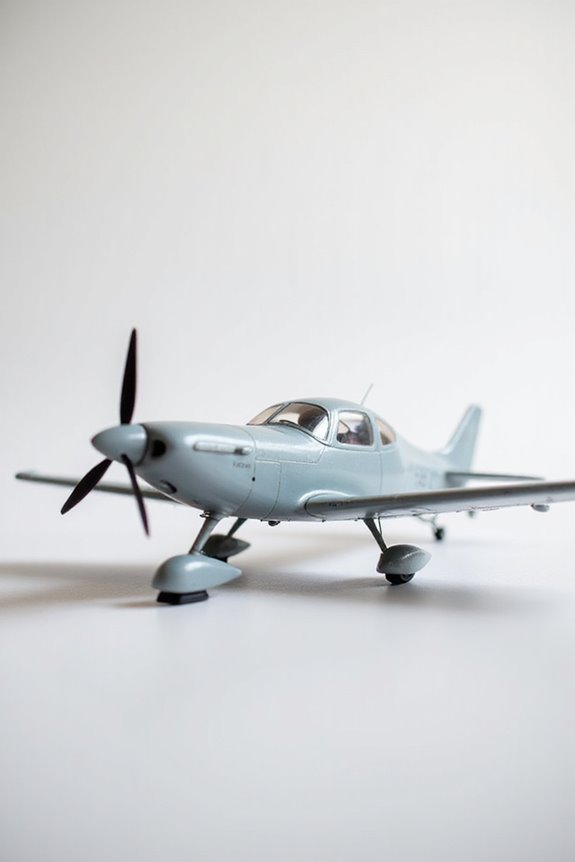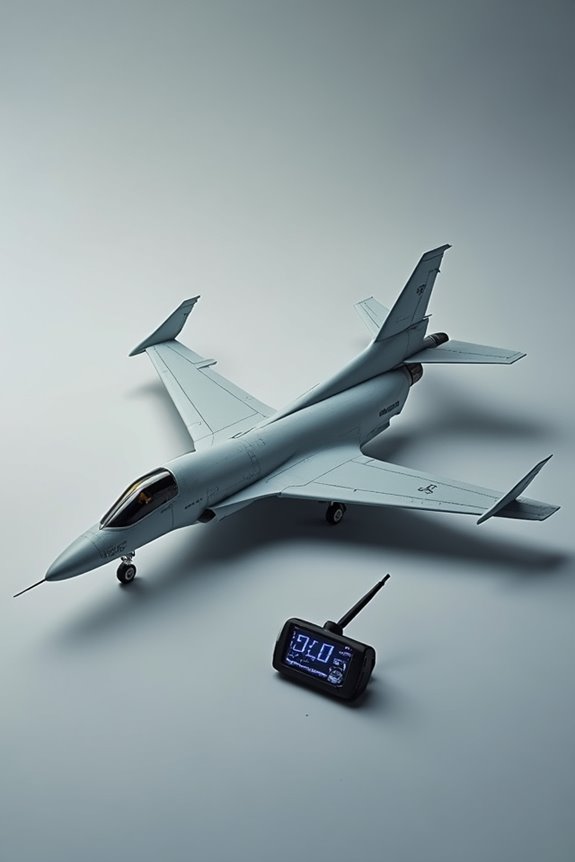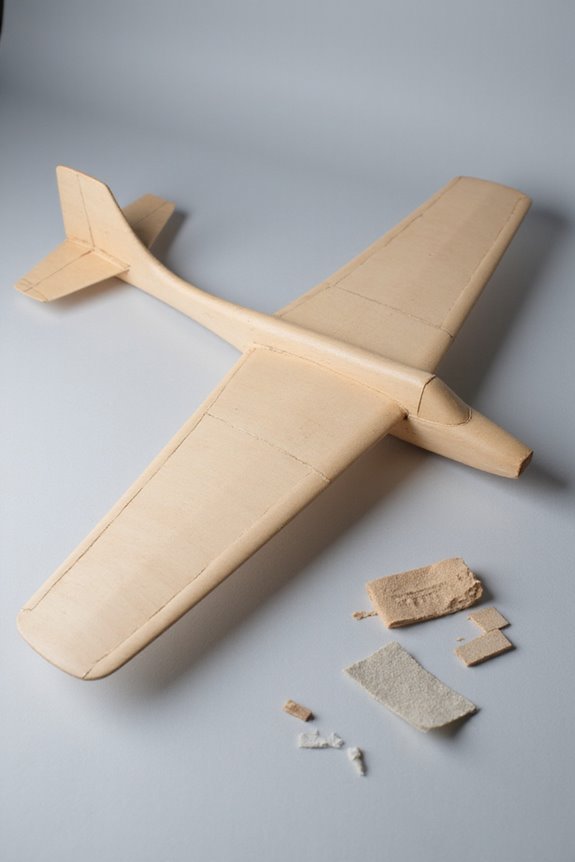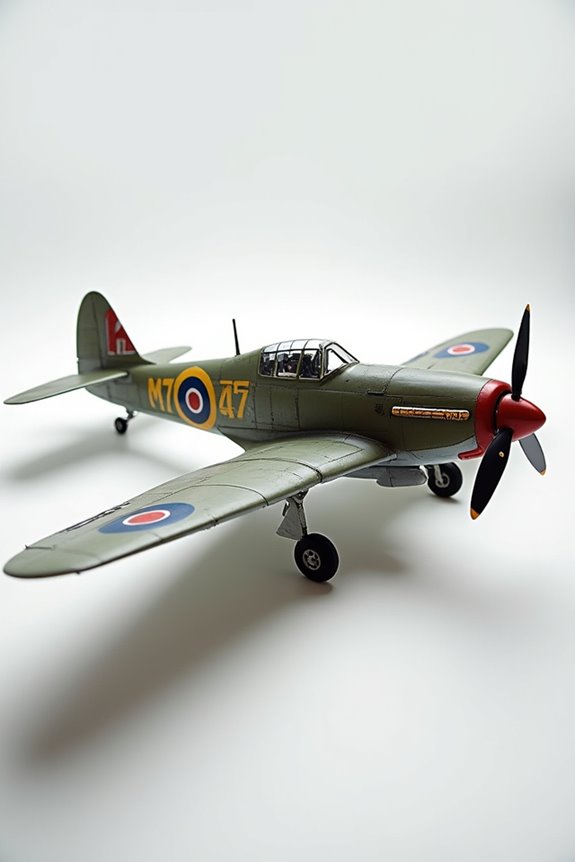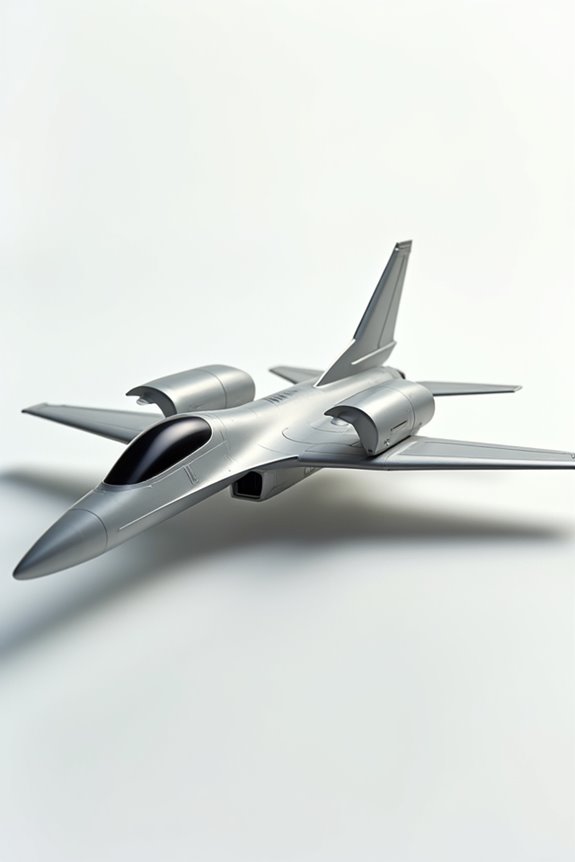For our first flights, the best conditions are clear skies and light winds. Think of it as the perfect recipe for takeoff: at least 3 miles of visibility guarantees we can see what’s in front of us. Light winds under 10 mph keep turbulence at bay, like a gentle nudge instead of a strong push. Plus, a well-balanced aircraft means a smoother ride. Stick with us, and we’ll explore more tips for a successful flight experience!
Key Takeaways
- Clear skies and a minimum visibility of 3 to 5 miles ensure safe takeoff and landing.
- Light winds under 10 mph reduce turbulence, enhancing flight stability.
- High cloud cover allows for safer maneuverability during initial flights.
- Favorable weather patterns, such as sunny conditions, improve overall flight performance.
- Conduct thorough preflight inspections to confirm aircraft readiness and safety.
Ideal Weather Conditions for First Flights
When we’re gearing up for our first flights, we really want the weather to play nice. Clear skies are our best friend, enhancing visibility factors during takeoff and landing. It’s like flying through a big blue cereal bowl, minus the milk, of course!
Fog? We’d rather steer clear of that. It’s a visibility buster, making things look like a scene from a spooky movie. We need at least 3 to 5 miles of visibility to follow FAA standards.
Light winds, preferably under 10 mph, keep turbulence at bay. And let’s not forget about cloud cover; a high cloud base lets us maneuver with ease. So, when picking our flying day, we really favor weather patterns that scream “Sunny skies ahead!”
Aircraft Performance Considerations
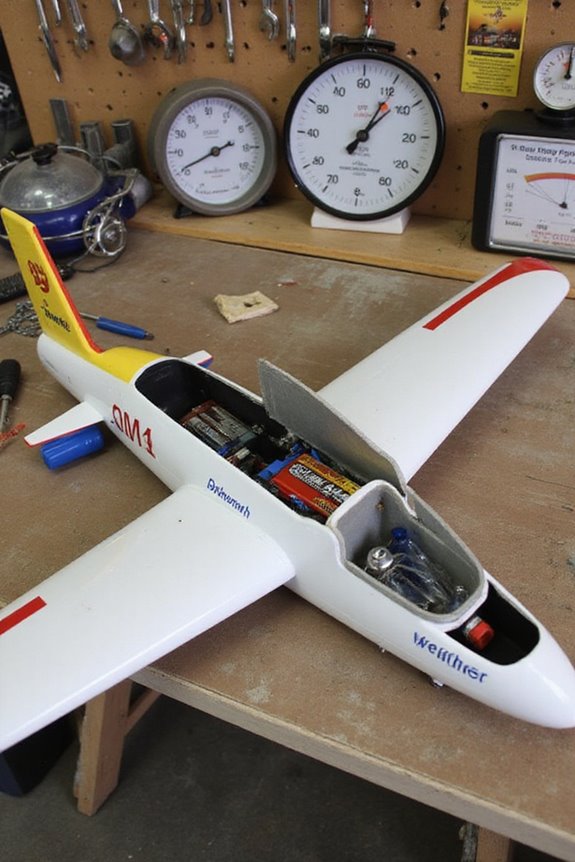
As we bask in the glow of perfect flying weather, it’s time to shift our focus to aircraft performance considerations. We all know that takeoff distance matters—the longer the roll, the more potential for hiccups. A headwind can cut that distance by about 10% for every 9 knots, so let’s pray for a breeze on the runway!
Weight balance is essential, too. If we load up too much on one side, our lift and drag can go haywire, making takeoff feel like trying to lift a stubborn mule! So, before we hit the skies, let’s guarantee our weight distribution is just right. A well-balanced aircraft is a happy aircraft, making sure our first flight is one for the books! Additionally, ensuring that the aircraft features stabilization technology can significantly enhance flight stability, which is crucial for a successful first flight.
Visual Flight Rules (VFR) Requirements
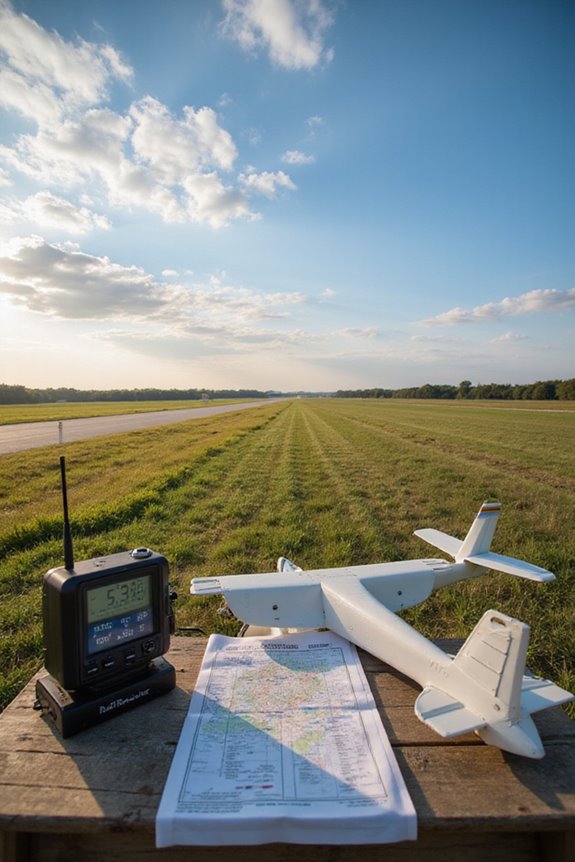
Flying under Visual Flight Rules, or VFR, can feel like soaring through a beautiful painting where the sky’s the limit. To keep things safe, we need to adhere to VFR regulations. Daytime flying, for instance, requires at least 3 statute miles of visibility, and at night, it jumps to 5 miles. We’ve also got to keep clear of clouds—1,000 feet above and 2,000 feet horizontally during the day. Think of it like trying to dodge an aerial game of tag! In busy areas, we must fly at least 1,000 feet above obstacles. Good weather is key too—no fog or heavy rain, please! Following these visibility minima guarantees we enjoy the thrill of flight while staying safe and sound.
Importance of Preflight Weather Planning Tools
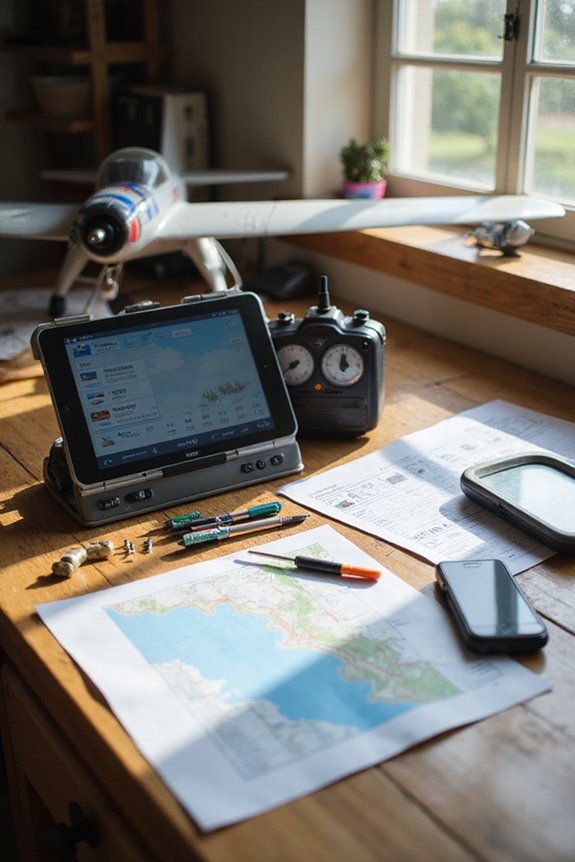
Before we take to the skies, some smart preflight weather planning is a must. We can’t just hope for clear skies; we need to prepare! Utilizing multiple weather resources, like the National Weather Service and helpful apps, puts us ahead.
We should always check AIRMETs and SIGMETs for safety updates. They’re like the weather whisperers warning us of trouble ahead! PIREPs, or pilot reports, give us real-time insights from fellow flyers.
Don’t forget to use graphical forecast tools to visualize winds and temperatures. The GFS model helps predict long-term conditions, which is essential.
In short, combining these resources makes our flight planning efficient and safe—just like packing your favorite snacks for the journey!
Thorough Preflight Aircraft Inspection
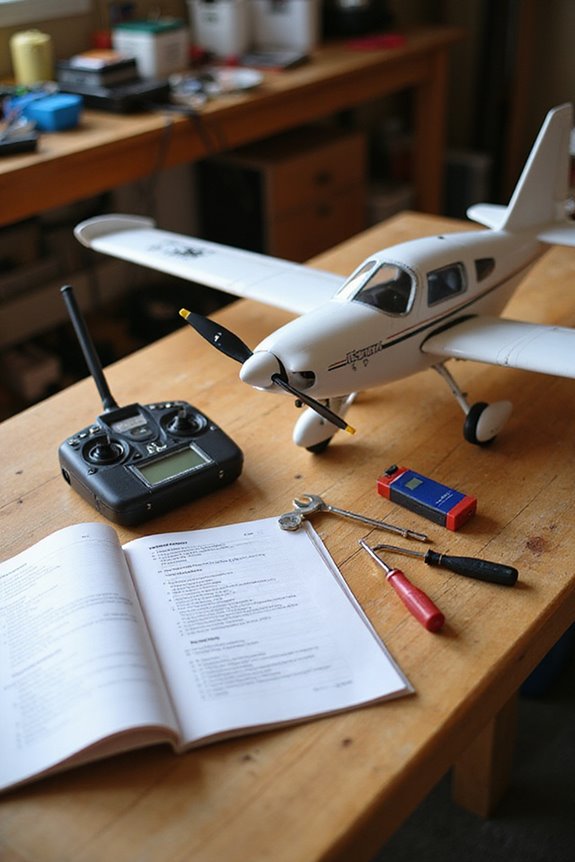
Thorough preflight aircraft inspections can feel a bit like preparing for a first date with your favorite aircraft—nervous excitement, but ultimately vital! We start with a preflight checklist to guarantee nothing’s overlooked. We’ll examine the airframe, wings, and empennage for any cracks or corrosion.
Next, we inspect the landing gear and fuel systems. It’s like checking our car before a road trip—safety first! We also peek inside the cockpit to verify all instruments and controls are smooth and ready for action.
And let’s not forget the vital engine checks! By following these inspection techniques, we guarantee our aircraft is in top shape, setting the stage for our wonderful flying adventure. Safety shouldn’t just be a priority; it should also be a habit!
Choosing the Right Flight Training Environment
When it comes to choosing the right flight training environment, we need to make sure we’re setting ourselves up for success. Airport selection is essential! We should look for runways that match our aircraft type and have smooth surfaces. Good visibility is vital—think clear skies, not cloudy soup.
Additionally, training at familiar airports helps boost our pilot readiness. Knowing the layout and traffic patterns makes everything feel less like a guessing game. Let’s avoid busy airspace during first flights. It’s like trying to learn to ride a bike in rush hour—stressful, right? Instead, we’ll opt for quiet skies to focus on mastering our maneuvers. By making smart choices about our training environment, we increase our chances of flying success!
Effects of Temperature and Density Altitude
As we explore the effects of temperature and density altitude, it’s essential to remember that these factors can make or break our flying experiences. Higher temperatures lead to decreased air density, which means our wings generate less lift. That’s like trying to swim in a kiddie pool compared to an ocean!
When it’s hot, engines produce less power due to fewer oxygen molecules. This results in longer takeoff rolls, kind of like running in slow motion. Additionally, as density altitude rises, our climb rate and maneuverability suffer, making the sky feel more cramped than it actually is.
Benefits of Experienced Instruction and Support
While we might think flying is just about feeling the wind in our hair, experienced instruction truly sets the stage for our success as pilots. With seasoned instructors, we receive structured guidance that helps us master complex skills quickly. They guarantee we retain what we learn, correcting our mistakes on the spot, just like a coach fine-tuning our swing.
We can’t overlook the confidence-building benefits of expert support. Under their watchful eyes, anxiety melts away, allowing us to make decisions in diverse flying situations. Plus, tailored feedback nurtures our independence, helping us feel like a true pilot sooner. Additionally, understanding the importance of beginner-friendly models will further enhance our learning experience. So, let’s embrace this incredible journey together, learning and growing under the wings of those who’ve soared before us!
Frequently Asked Questions
How Can I Improve My Confidence for My First Flight?
To boost our confidence for our first flight, we can establish a pre-flight checklist and practice relaxation techniques. These steps help us prepare mentally and physically, creating a more enjoyable and anxiety-free experience together.
What Should I Wear for My First Flight Experience?
Imagine starting an adventure, dressed in comfortable clothing and appropriate footwear. We’ll feel at ease, embracing the journey ahead, ready to explore while ensuring flexibility and warmth throughout our flight experience together.
Can Friends or Family Accompany Me During My First Flight?
Yes, our friends and family can accompany us during our first flight as flight companions. They’re essential support systems, helping ease anxiety and making the experience enjoyable while ensuring we comprehend the process and procedures.
What Emergency Procedures Should I Be Aware Of?
In emergencies, our hearts pound as we prepare for potential landings. Knowing safety protocols can save us: establish glide speed, identify landing sites, and communicate clearly. Together, let’s prioritize safety and stay calm in crisis.
How Can I Ensure I Am Mentally Prepared for Flying?
To guarantee we’re mentally prepared for flying, we can practice mindset techniques and engage in visualization exercises. Imagining a smooth journey helps ease anxiety, making our experience more enjoyable and manageable. Let’s embrace the adventure together!

